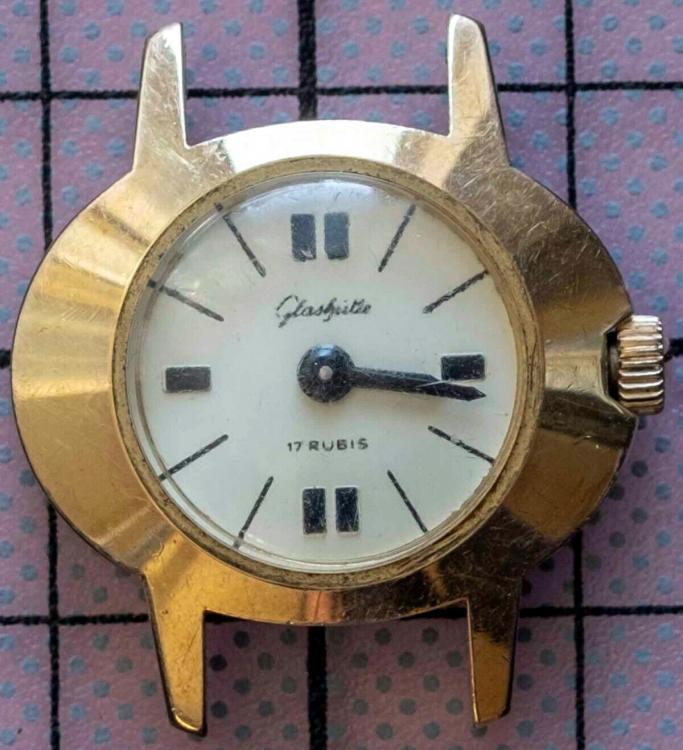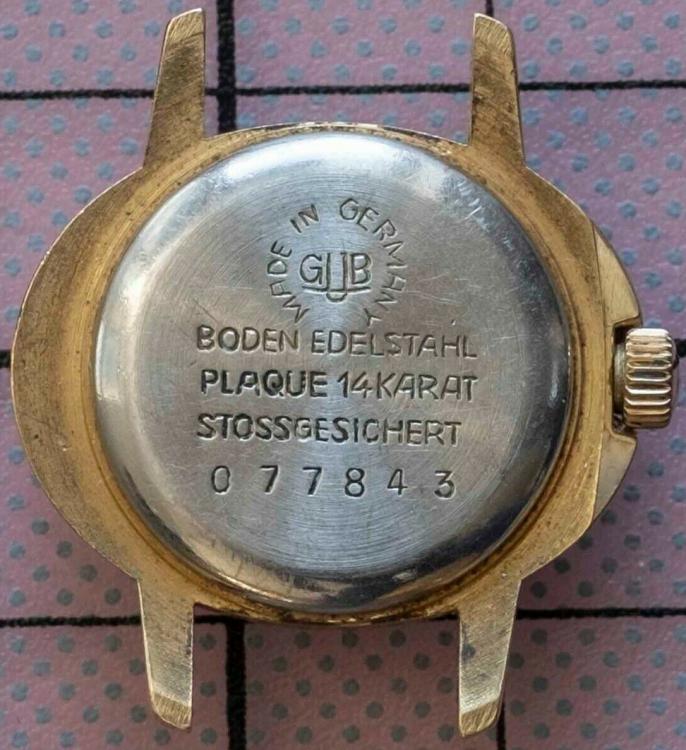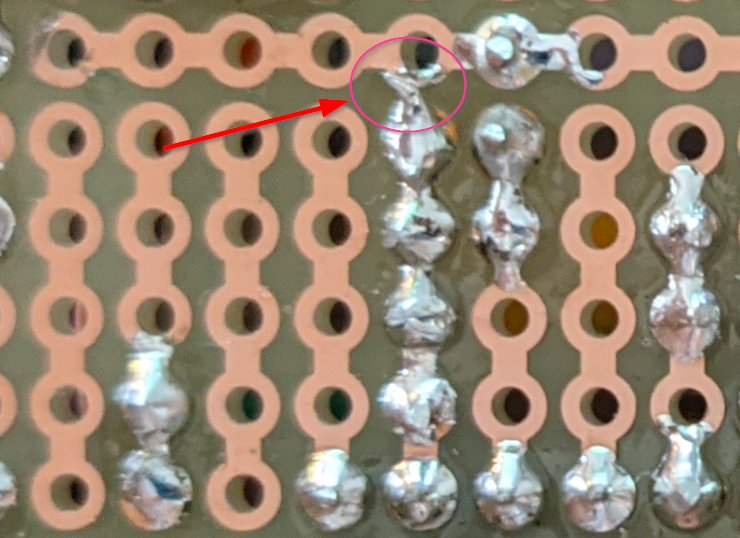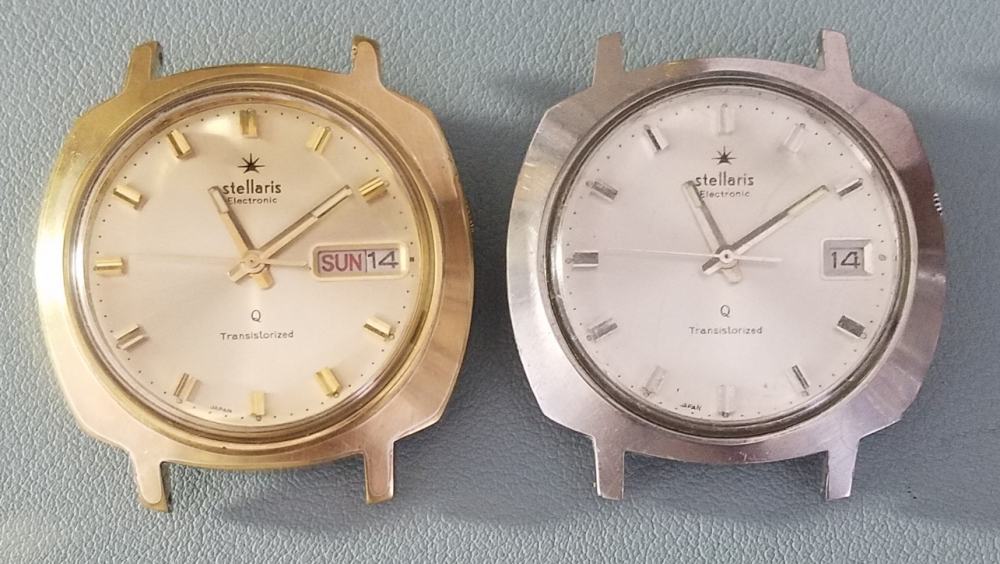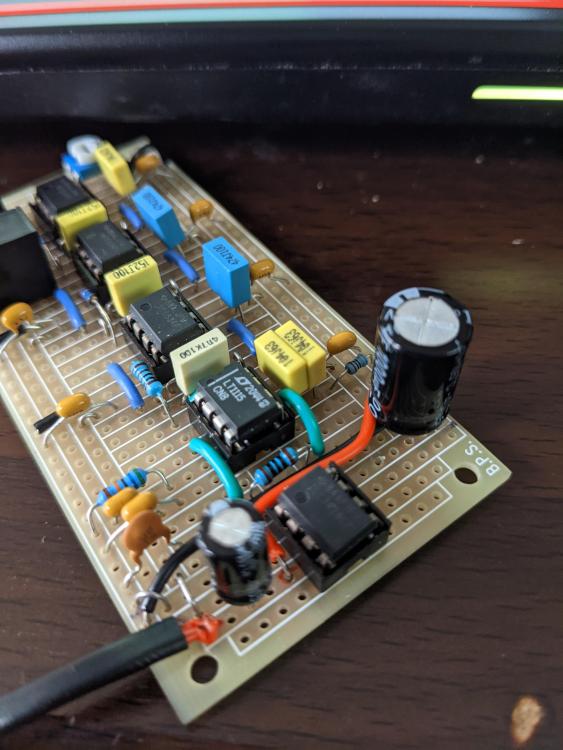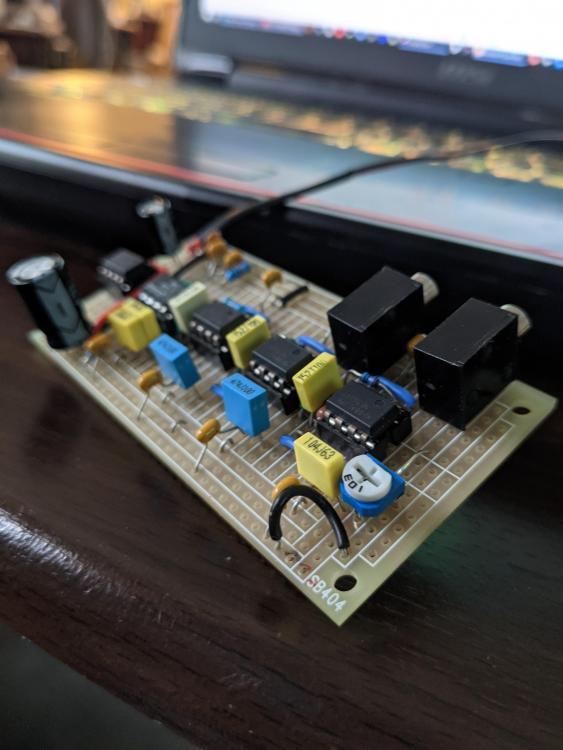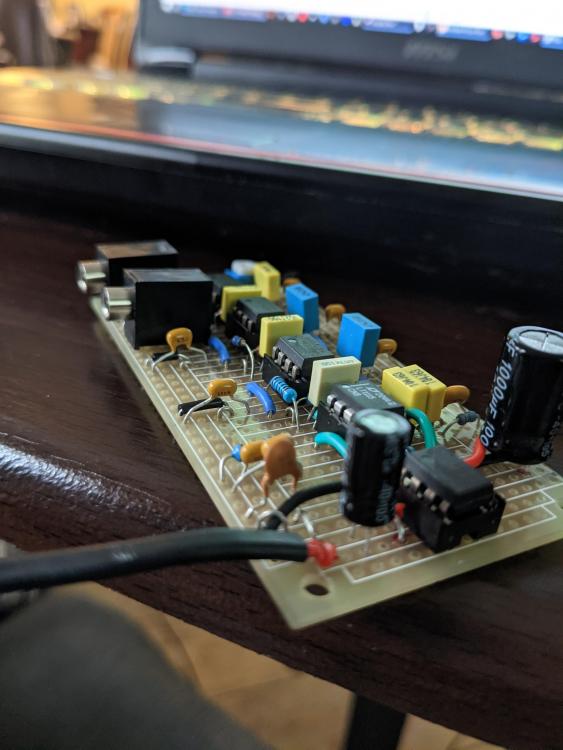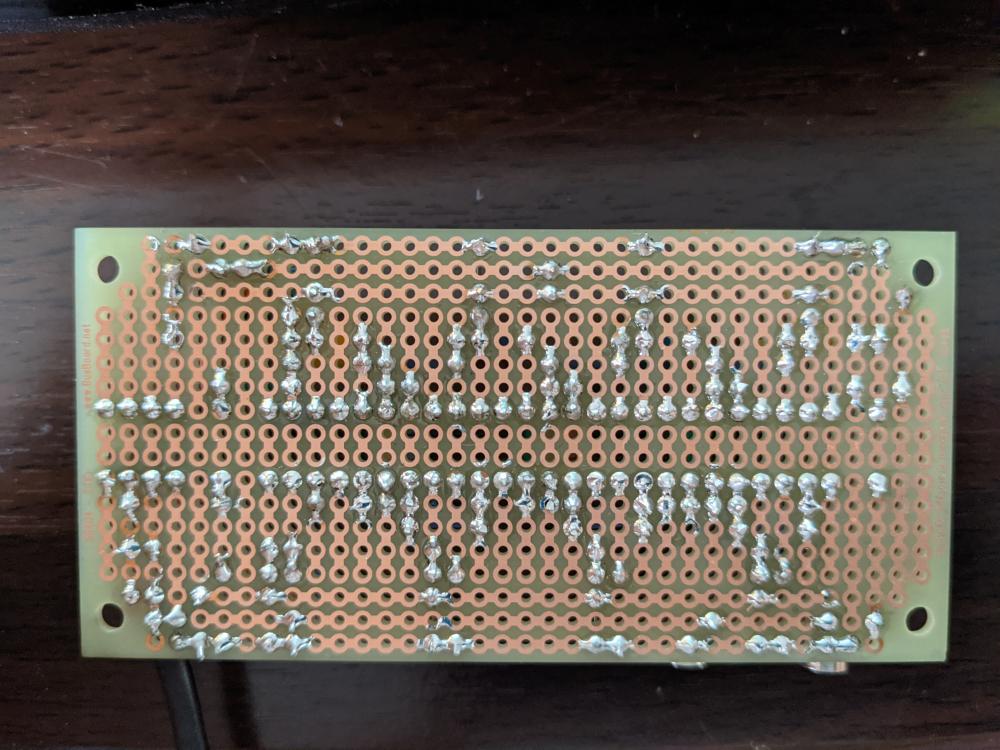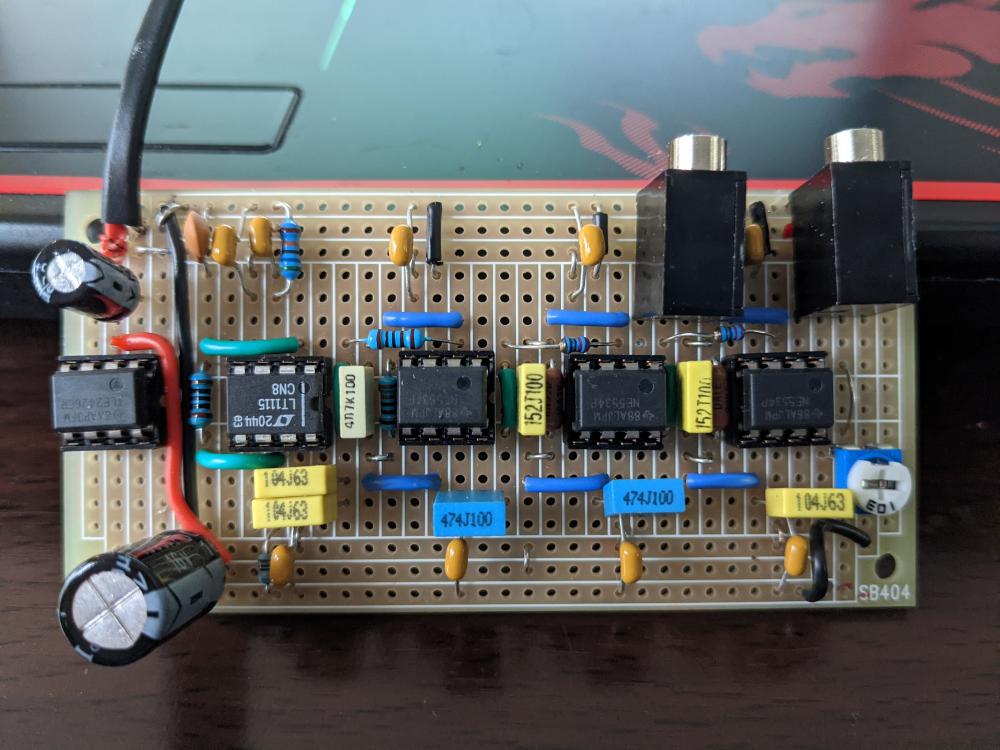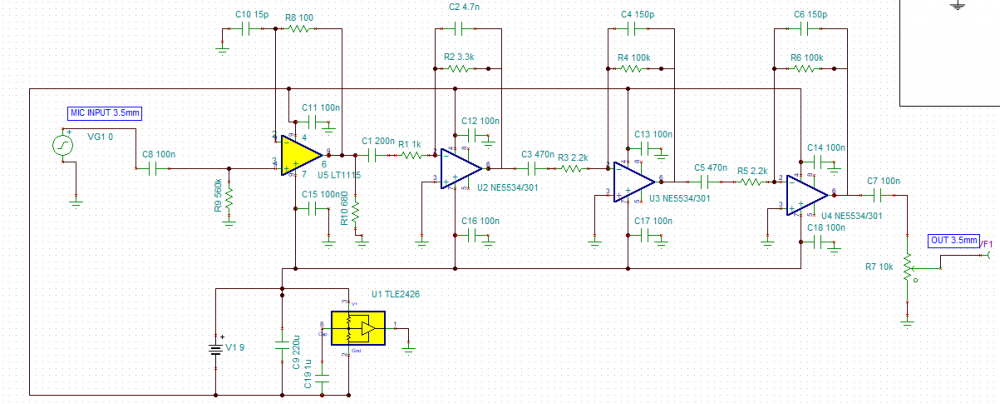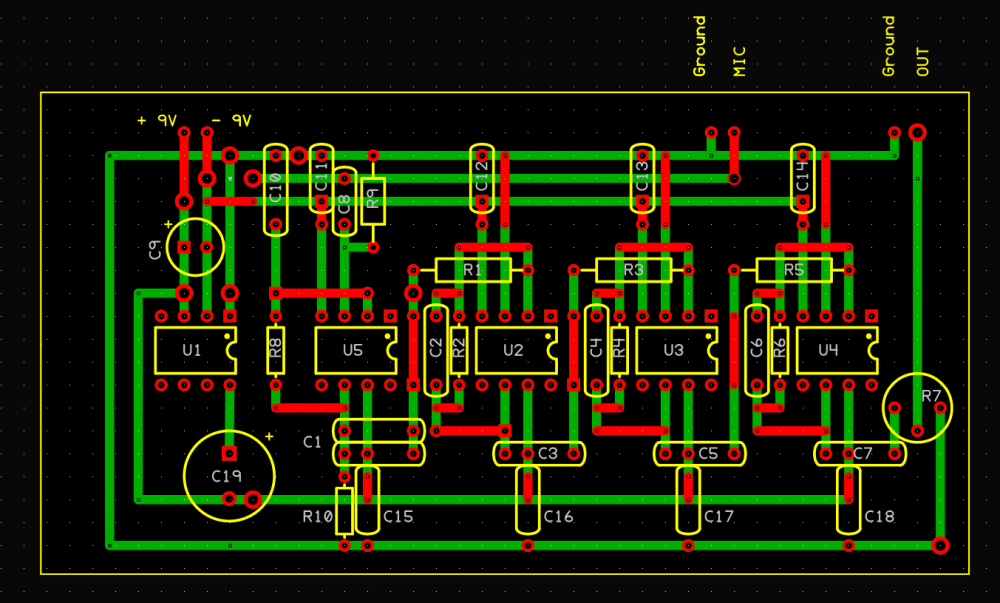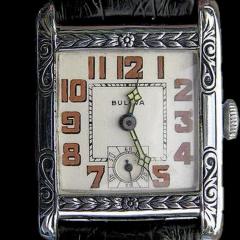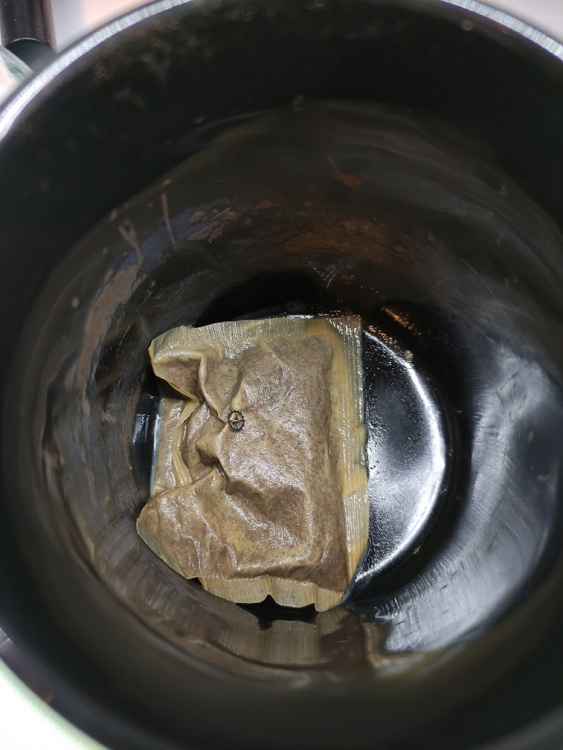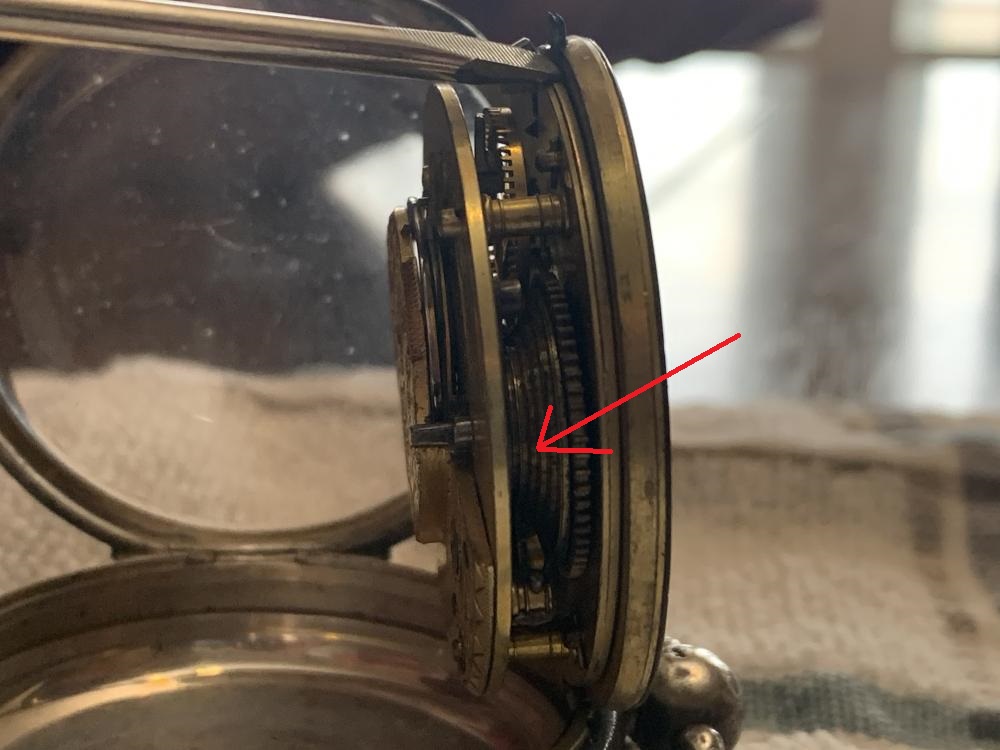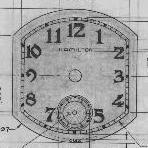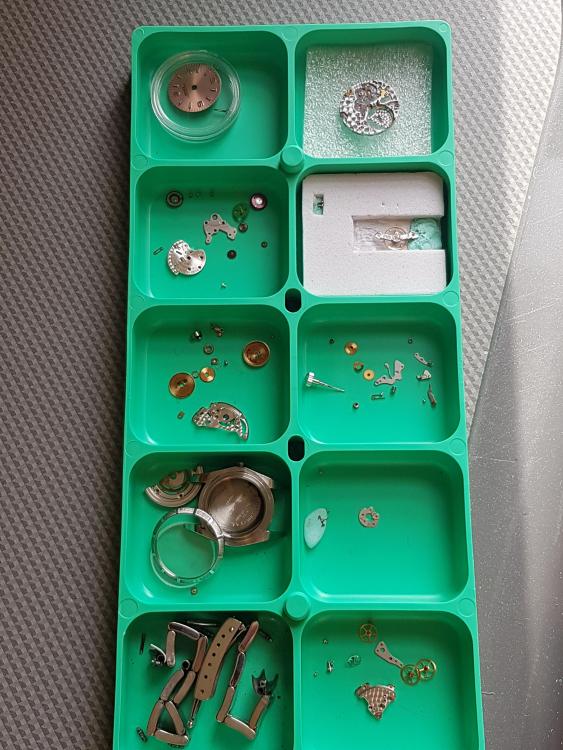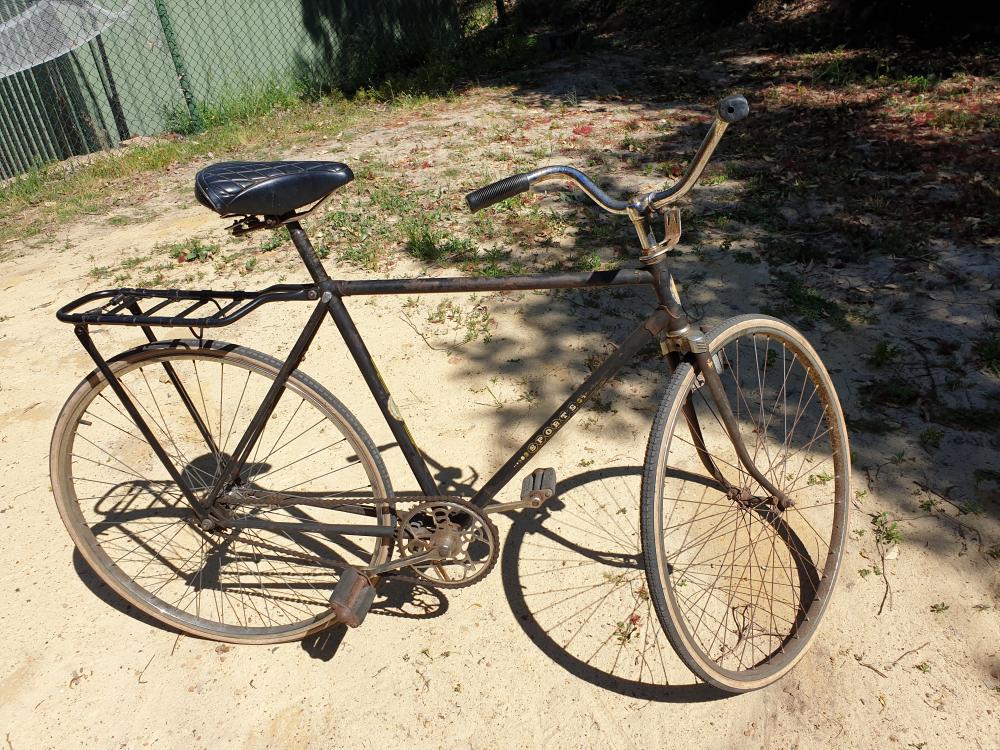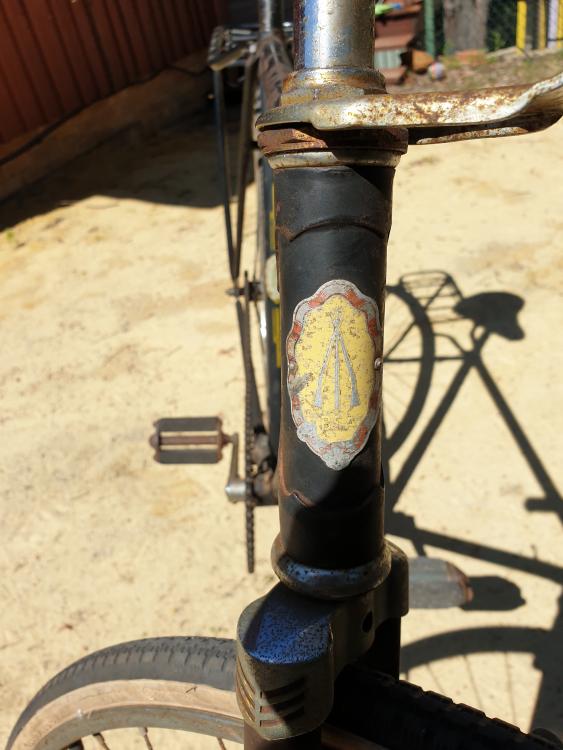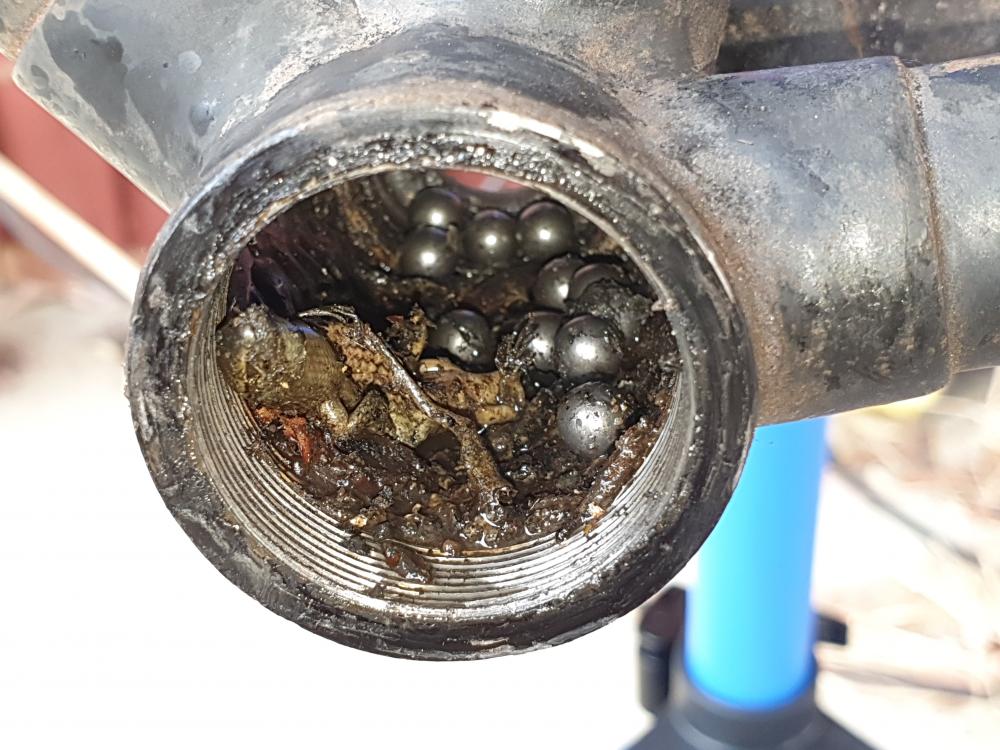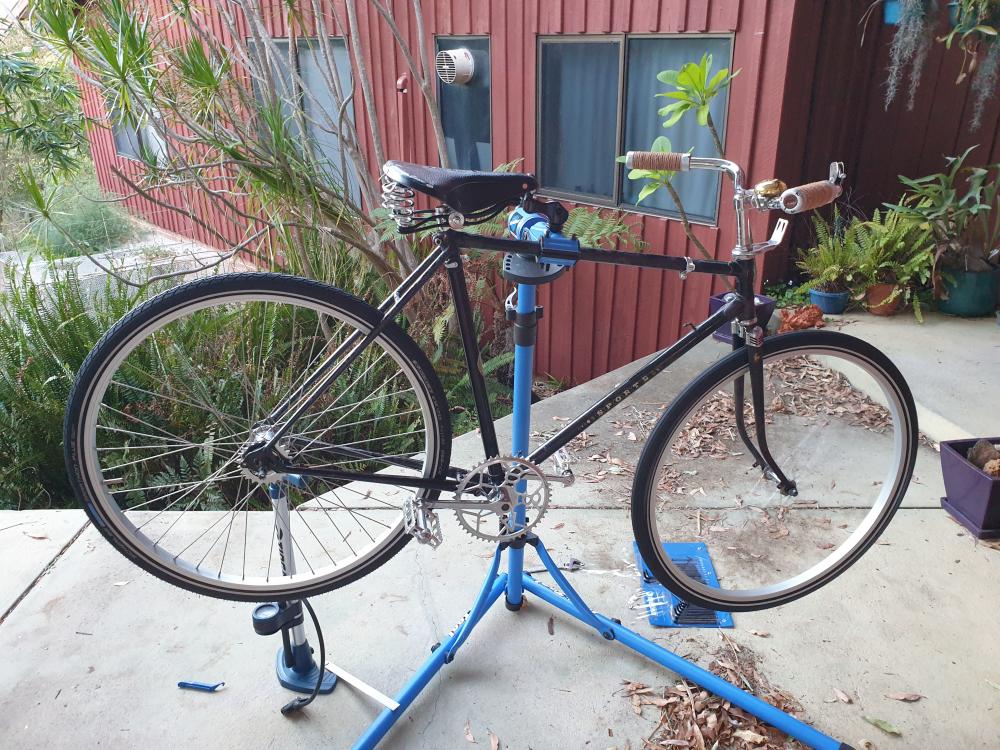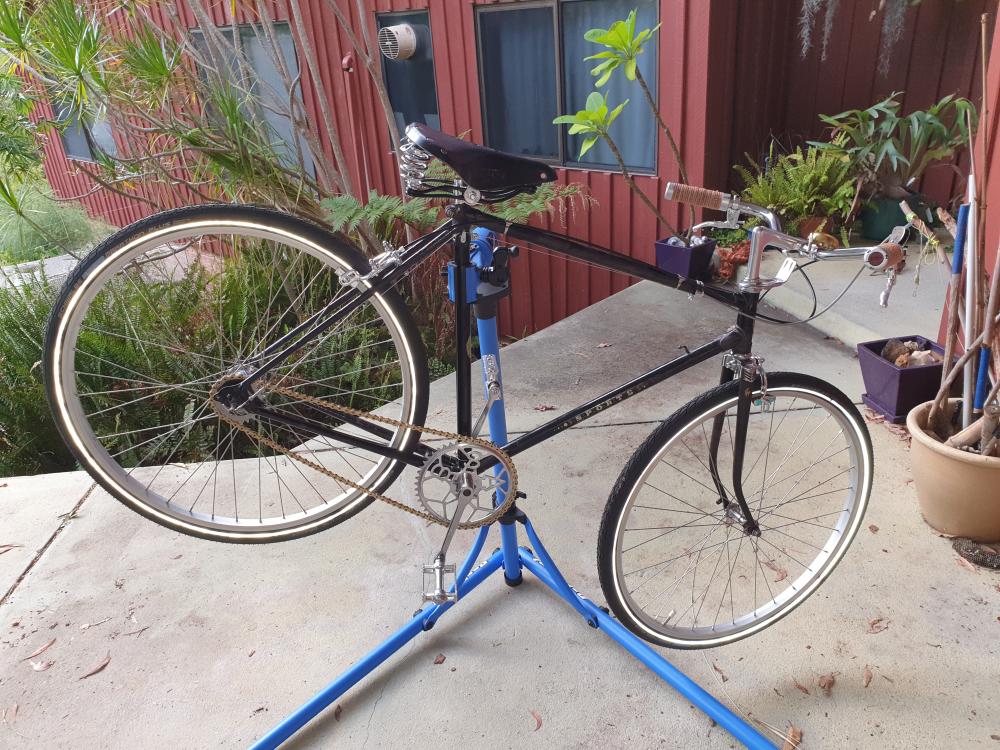Leaderboard
Popular Content
Showing content with the highest reputation on 03/14/21 in Posts
-
I have loads of Beefheart including bootlegs. Trout Mask Replica is my favorite followed by Mirror Man. This cracks me up everytime I watch it.2 points
-
Yes of course, rubbed-in jewels as well. I didn't think of that. I've actually avoided these really old watches so far. Replacing and adjusting these rubbed-in jewels seems pretty tricky. If that's slipping with your screwdrivers I have a couple of suggestions if I may (you didn't ask for my advice). Firstly, make sure you use the correct width of blade for the screw at hand. Secondly, dress the blade well so that it fits the screw slot securely, and thirdly (and perhaps most importantly) keep the screwdriver as perpendicular as you possibly can over the screw. If the screwdriver is tilting in one direction the blade will slip in the opposite direction. Also, small screws require a lot less torque than larger screws. I don't know how many small screws I've damaged by over tightening them and slipping out of the screw slot. Yes, you do need a microscope! I got myself a cheap Chinese 20X/40X stereo microscope early on and I've never regretted it. It is a blessing. With it I can clearly see what's going on and the result of it. Be it oiling, fitting something really minuscule such as a Seiko anti-shock spring for an escape wheel, and so on. If interested you can read more about my experiences here Nope, it's usually all about making a buck! I'm very much into Vostoks, Poljots, Raketas, and so on and they're basically always sold "as serviced" but they never are. Well, perhaps dipped in a can of naphtha, left to dry, and then flooded with some seed oil.2 points
-
I use my wife whenever I've lost a part and I'm devastated. She has the eyes of a hawk and has an eerie ability to find any part no matter how small in minutes. She definitely gets a kick out of it. The record is a cap jewel anti-shock spring for the escape wheel pivot of a Seiko cal. 7S36B. It is smaller than a spec of dust. I think she was sent to me for this very reason. Bless her and I try to treat her really well so that she won't get any second thoughts about me. Couldn't do watches without her! She has a sister who's single if anyone is interested ?2 points
-
Very good. Excellent. I don't understand the lingo very much but, I enjoy the comments and I learn. I also want to congratulate the work of @CWRNH, it honestly looks neat and tidy.1 point
-
As I have said, and you have proven...pin 6 is shorted to V-. Until you remedy that, I have no more answers.1 point
-
I would leave it alone it's not the problem. A minor issue with the data sheet in that they should have given these separate part numbers perhaps? You'll notice in the attached image the three pin package has three pins. The eight pin package has of course more pins to do things with. Like have a noise reduction pin which requires a capacitor.1 point
-
A Ladies Glashütte 17 jewel all the way from sunny Boden Edelstahl. That's as close to a German joke as I can muster. Boden: Edenstahl translates as Bottom: stainless steel, but Boden Edelstahl does sound very like an idyllic spot in the Black Forest. Glashütte is in fact a town in Lower Saxony from which the watch manufacturer takes its name. It is 14k plated, shock-proofed (stoßgesichert) and probably from the 1970s to judge by the design. It is a non runner, and not quite in the same price bracket as its modern counterparts which start some where north of £5,000. In fact this particular little example easily qualifies for the 404 club. My guess is that it probably has a Gub 77 or related movement in it, which should make for an interesting service or repair.1 point
-
1 point
-
1 point
-
Don't worry T. A. Edison took a long time to find the results for the incandescent light bulb. ??1 point
-
LOL, the last guy who worked on this one just gave up. It is hacked up pretty bad at the calendar works. I got it running very well, but did not want to try and fix the calendar. Also, the dial was a mess. HOWEVER, I have another one from my box-o-watches that had two problems: 1) the leaf switch had worn down, and 2) circuit board anomalies. Perhaps there were other issues. So I stole the balance, pallet fork, leaf switch and circuit board and put it on the one I had already (from my box). Got it running but when the calendar was about to flip, the watch stopped. Ultimately, I believe the issue was the pawl spring that keeps the escape wheel from backing up was adjusted too tight and the friction of that plus the calendar was enough to stop it. There is an adjustment for this--so I made the adjustment. It ran fine for several days. Today, I decided to put it back into the case. This was challenging because I forgot how the movement spacer ring was attached. Well...it must be attached WHEN attaching the dial--it is not an afterthought. The final challenge was to put the crystal back on (this is a front-loader). Normally, I use my crystal remover and leave the crystal on it until I am ready to reinstall. This time was different--I took the crystal off of the tool. This crystal has a metal bezel ring. After fiddling around, I noticed that the crystal has a bevel at the base. Aha! The blinding glimpse of the obvious. This was designed to be pressed on. So I got out my BB Crystal press and voila! I know these Stellaris watches pretty well now (movements are Seiko) but I am kinda done for awhile.1 point
-
1 point
-
I forget just how I decided to start learning about watchmaking, but here I am. Other than my Garmin watch that I use to track my backpacking activities, I only own one "real" watch, a 1928 Bulova Surrey that I bought on Ebay 15 years ago. I think it was probably that watch that sparked an interest as it stopped running many years ago and has just sat in drawer ever since. I remember looking at ways to service it over the years and I think I just figured I'd try and see if I couldn't do it myself and here I am ? I've gone through the first two of Mark's courses and have been practicing on some scrap watches I got off of ebay. I'm a retired dentist and some of the hand/eye skills do seem to carry over but as I watch some of the videos I have filmed of myself as I've stripped and then rebuilt movements I do see that I'm a bit heavy handed. I need to add another fine motor gear or two into my repertoire ? It looks like there is a great community here and I'm looking forward to climbing that road to where I can at least service that beautiful Bulova in my drawer. OK, I'm off to post my first of what I'm sure will be one of many questions ?1 point
-
" A new-model" So has the back ever been removed? thats when dirts can fall inside the watch. Otherwise hand rubbing on crystal or the other hand is very likely. A test for diagnosis would be to remove the seconds hand and wear it for couple of week.1 point
-
1 point
-
Take comfort in knowing that repetition will allow you to develop a pattern. I've done enough mechanical watches by now that, unless it's something unusual, I just know where all the parts go. I haven't needed to photograph anything recently (knocking on wood). I always let down the mainspring first. I put the balance complete on my nifty little brass tack/table I made, and that, and the fork, get a special and separate cleaning. I put most of the screws back in their holes - and clean them individually later. I will sometimes still photograph the keyless works if the clicks and springs are arranged strangely. But generally, I have my rails and I run on them. It helps me not forget something.1 point
-
I'll admit I'm jealous of the watch. As soon as I saw it I thought it looked great. Wife liked it as well. I agree with you on the case. I don't know what the original case looked like, but that one just works. I have looked at a lot of the watches in a jewellers where I live and not one of them grabs my eye like yours. It's a keeper. ?1 point
-
1 point
-
The short answer is the smallest others may disagree but too much oil in the escapement can effectivly reduce the balance amplitude.1 point
-
1 point
-
That is what I wanted to see. It is a fusse pocket watch which should have a chain,one end should be attached to the fusse which is the cone shape (red arrow) the other end attached to the barrel. It was an invention because it those days it wasn't possible to have the same strength in a mainspring from end to end, with a fusse it was possible to regulate the strength so the watch would keep better time. There are loads of these pocket watches about made by various makers, the famous makers the watches are very valuable. A well qualified watchmaker should undertake this type of repair if you decide to have it in good working condition.1 point
-
I think I found it under my bench. Perhaps my incabloc spring ended up under yours? ? Seriously, a sweeper magnet (kind of like what roofers use for stray nails) can work wonders. Others have done what crime-scene techs do: put a very fine filter over a vacuum tube (think hosiery) and then see what gets caught.1 point
-
What's the movement - there may be a technical service sheet for it ? There is a general sort of order - just watch any of Mark's videos. When disassembling (take photos at each stage) I use containers with compartments - each compartment for a different set of components : gear train, auto mechanism, keyless work etc. Then, as I only have a small ultrasonic, I clean each compartment set at a time.1 point
-
I don't know if anyone had noticed, but I haven't been on here for a few weeks as I have been distracted by something else on and off for the last few months and it has been taking a lot more of my attention over the last few weeks, but its nearly finished now, so I have time to come back to here. In November last year whilst browsing 'Gumtree' (Australia's version of Craigslist owned by Ebay) I looked up 'BSA' to see all the nice motorbikes I can't afford to buy and in amongst them was a BSA bicycle. It was made in the 1960s so not a 'real' BSA bicycle, but a BSA badged Raleigh Bike as BSA had sold them the rights to make bikes in 1959 or 1960, but it still has the BSA logo head badge and BSA written in the cranks and best of all it was cheap. So I snapped it up. The bike had the incorrect seat, stem, handlebars and wheels, so I really was just buying it for the frame, forks and cranks. When I started to strip it down I got a surprise in the bottom bracket in the form of a dead lizard (skink) it was still pretty fresh so I can only think as I removed the seat a few days before stripping the rest of the bike it climbed on the bike and fell down the seat tube and got stuck. With the bike stripped down it got given a wash and about 8 hours polishing with T-Cut on the frame being careful not to damage the pinstriping and all the chrome was given a long bath in a weak solution of oxalic acid then just a rinse with clean water and a wipe with a rag and it all came back looking like new. Then I sourced the correct 650A rims out of the UK, a 1966 Sturmey Archer 3 speed AW hub, period correct front hub and after servicing the hubs sent the wheels off to be built. Meanwhile I got the correct seat post and a new Brooks seat as the bike would of had originally, the correct style handlbars and I took a liberty and bought some Brooks plump handgrips and a new English made brass bell then sounds cleaning and loudly enough to be fitted to any good clock. Since taking this photo I've fitted the chain and measured what size brake calipers I need and they are in the post along with a replacement handlebar stem and once they are fitted the bike will be ready to ride. It's cost me probably more to fix this bike between the parts and tools I purchased to work on it than a new reasonable quality bike, but this bike is way cooler than any new bike I could buy, plus it looks good leaning against my 1961 C15 BSA.1 point
-
The bike is now all finished although I will replace the brake leavers when I can find some more in leeping with the age of the bike. I took it for a short test ride tonight and the Sturmey Archer hub is changing gears nicely and no slipping when riding up hill. I'll take it for a longer ride this weekend.1 point
-
I figured I'd post the watch that started me on this journey. It really is quite gorgeous. I saved the photos from the original ebay listing. The listing said, "ART DECO 1930s BULOVA ENGRAVED CASE WATCH NEAR MINT" I've since learned that the watch is not from the 1930's but is a 1928 Surrey. Also, not mentioned in the listing is that it was recased in an Illinois Watch Co. case. I actually like this case much more than the original Surrey case so I can't really complain about that. The only real issue is that the movement just kind floats in the case since the movement isn't actually attached to the case in any way.1 point
-
I'm afraid one day I will die and my wife will sell my watches and tools for what I told her I paid for them.1 point
-
Masala chai originates from India. You can try getting it from South Asian grocers. You can sometimes get a ground spice blend which you can add to and Indian teas. Or if you are willing to experiment, it's usually a blend of cardamom, cinnamon and cloves. Sometimes ginger and black pepper corns are added too.1 point
-
It's what spectre mentioned above, yerba mate. The cup is called a mate and the beverage is called mate (mahtey) haha. Pretty decent caffeine level. It's drunk from a small gourd (mate) with a straw, the bombilla, which has a filter on the bottom end. The gourds can get quite fancy, leather clad, with artsy metalwork and such. Nowadays you can get plastic and silicone ones too, but old Argentines despise these. I use a silicone one at work and have a nice leather one at home. I can always get an eye roll from my daughter when I point to my mate and say,"that's mate (mah tay [my tea])". It only works since tea is pronounced "tay" in French which we both speak. She'd also contest the idea that the joke works, hahaha, but I'm a dad so it's a dad-joke.1 point
-
1 point
-
0 points
-
@JohnR725gets to my reasoning...re virtual ground. I want to measure with respect to a known potential. The virtual ground circuit may be the issue.0 points







